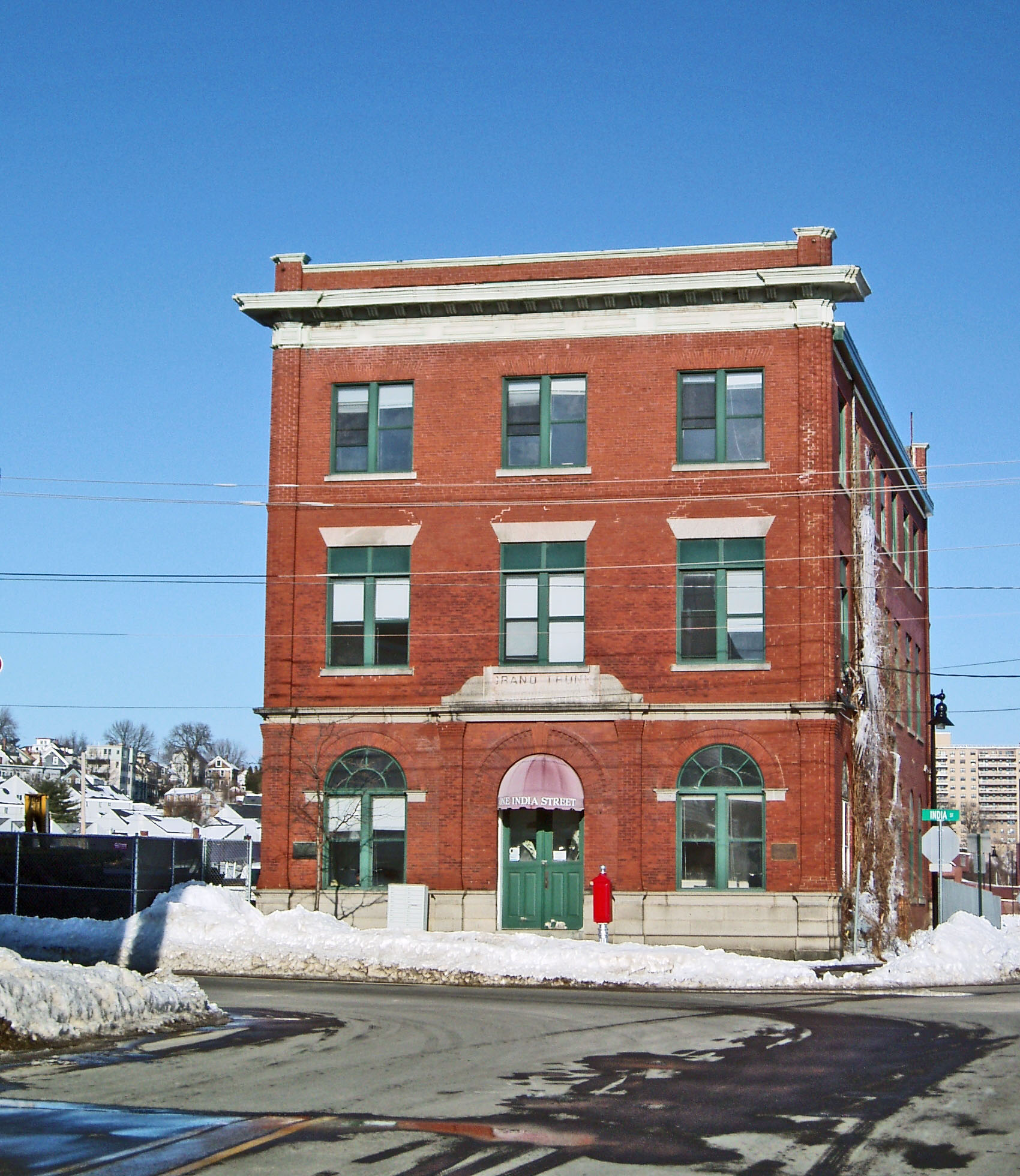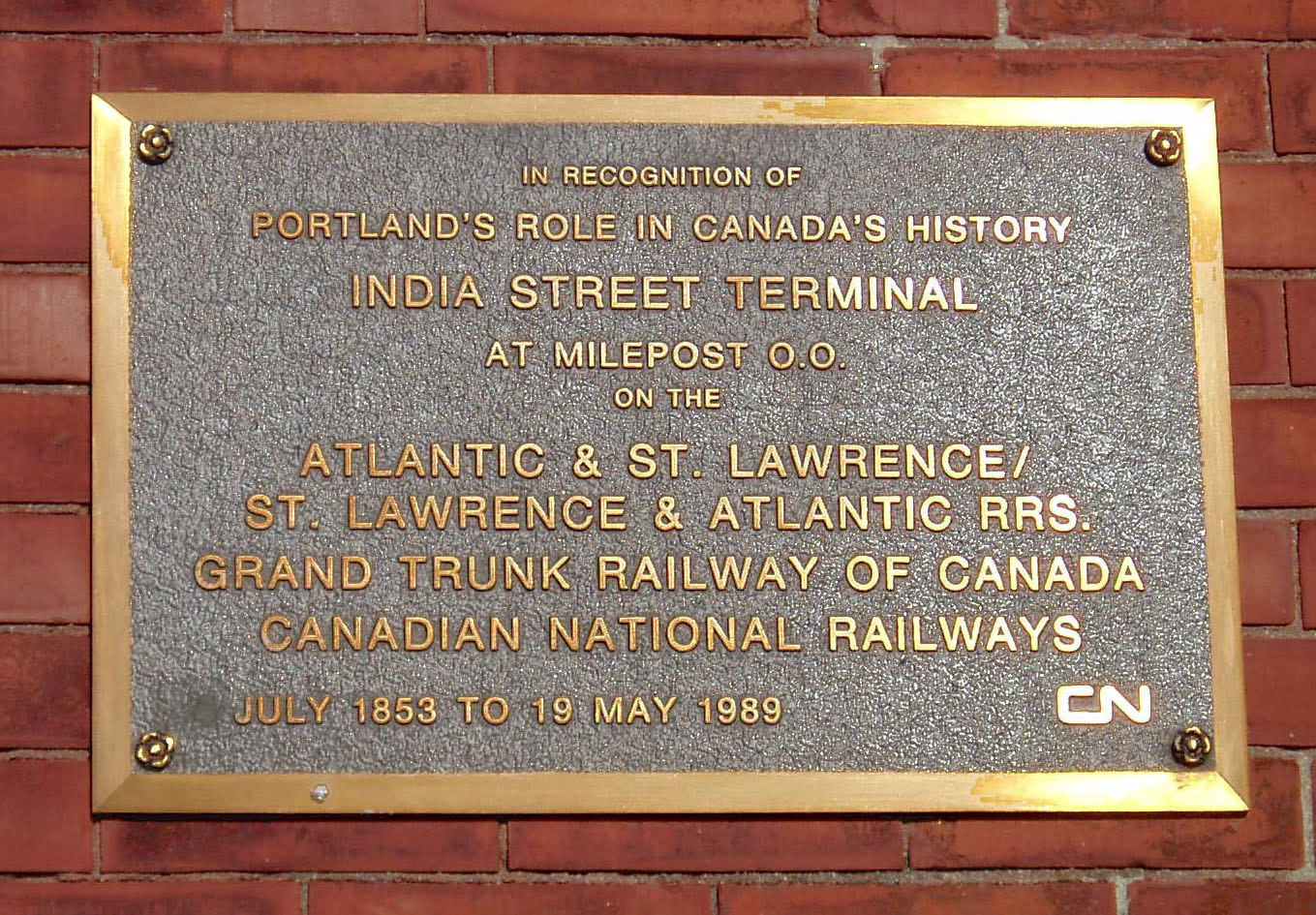

The building you see is not in or near Detroit. It marks, however, the eastern terminus of a great rail network that linked Detroit and the entire Midwest to European commerce.
In terms of population and economic growth,
Canada developed less rapidly than the United States. When the British defeated
the French for control of North America in 1761, there was a moderately large
French population
in Québec, primarily living near the St. Lawrence. But
the British prohibited further immigration from France to Québec. By the early
decades of the Nineteenth Century, the natural resources of Canada were increasingly
popular in Europe. Gradually,
British investors and merchants established prosperous trading firms in Montréal. When
immigration from the British Isles to the New World increased in the 1820s
and 1830s after steam vessels made crossing the Atlantic faster and safer, the English population of Canada grew more rapidly. Upper Canada, now known as Ontario,
attracted some European settlers, but population growth was slow in that
area compared to Ohio, Indiana and Illinois.
By the late 1840s, Montréal was emerging into a major North American mercantile center, a Francophone city but with British entrepreneurs holding most of the key economic positions. York, now known as Toronto, slowly grew into a business and governmental center in predominantly English-speaking Upper Canada. The outlines of modern day Canada were beginning to take shape.
In 1852, long after many rail lines connected United States cities, British investors committed funds to build a railroad between Toronto and Montréal. I believe that construction on this line began in 1854. This was named the Grand Trunk Railway because it would be the major trunk line linking two large cities. Montréal was Canada’s leading seaport. Because of rapids at that point, it was impossible for ocean vessels to sail any further west on the St. Lawrence River. But Montréal had a great problem: cold weather and ice. For four or five months every year, it was impossible to sail from Europe to Montréal.
Entrepreneurs in Portland, Maine, led by John Alfred Poor, asserted that their harbor was the furthest north ocean port on the North American mainland that was free of ice all year. They knew about the prosperity of Montréal and intended to capture some or much of the shipping that went there. As early as 1845, investors in Portland planned a railroad that would link their marvelous ice-free port with the one that iced over for months on end every winter. John Poor led the efforts to successfully convince the Montreal commercial leadership that they should invest in a rail line to Portland rather than to Boston. The Atlantic and St. Lawrence rail line reached the Canadian border at Island Pond, Vermont in 1851. Then a companion St. Lawrence and Atlantic Railroad was chartered in Canada to build from the Vermont line to Montréal. By the summer of 1855, a rail route connected Portland and Montréal. Passenger service continued on this line for 112 years.
In the 1850s, southern Ontario was gradually settled by farmers. In addition, investors in the Grand Trunk Railroad realized that Chicago would become a major shipping point and foresaw the profit they could gain by helping to ship midwestern products to Europe. By 1859, the Grank Trunk lines reached from Portland to Sarnia. The managers knew that Detroit was a much more important commercial center than Sarnia, so they built a line from Port Huron—just opposite Sarnia to Detroit. Railcars were put on barges for the trip across the St. Mary’s River. This line to Detroit from Port Huron opened in 1860 and is is well know as the first employment site for Thomas Edison. He was a news butcher on the passenger trains but the Grand Trunk fired him since he conducted a chemical experiment in a baggage car and accidently set it on fire. Shortly thereafter, managers of the Grand Trunk Railroad understood that their lines tapped the increasing prosperous Midwestern states. The Grand Trunk built west from Port Huron with one line reaching Muskegon, another Chicago and branch lines throughout southern Michigan. By the 1880s, Midwestern grains could be shipped to Europe any time of year using the Grand Trunk rail lines from Chicago, through three US states and two Canadian providences, to Portland.
Railroads played a key role in the development of the United States. However, they played an even greater role in the development and unification of Canada as a nation. The building you see, although in the United States, is mile point 0.0 on a tremendous rail system that eventually served almost all populated points in the world’s second largest country.
The Grand Trunk Railroad, similar to many other rail lines, faced bankruptcy a number of times. Confronting such difficulties after World War I, the Canadian government more or less nationalized many of its failing rail firms and created the Canadian National Railroad. That railroad continued to own and operate many lines in the United States, but those lines retained the name Grand Trunk Railroad. In 1993, the Canadian government privatized the Canadian National Railroad. It continues to operate most of the lines described above, although the section from Montréal to Portland is now the independent Atlantic and St. Lawrence Railroad. This is the name used back in 1851 when the firm was chartered to build a line from the Vermont border to Montréal. The Grand Trunk Railway, in 1906, built a huge passenger station next to the building pictured above. That impressive station was demolished in 1966 but the office building they constructed in 1901 to sell steamship tickets and process paper work remain near the Portland waterfront.
Date of Construction: 1901
Architect: Unknown to me
Use in 2011: Office building
National Register of Historic Places: Not listed
Photograph: Ren Farley; January 16, 2009
Description updated: May, 2011